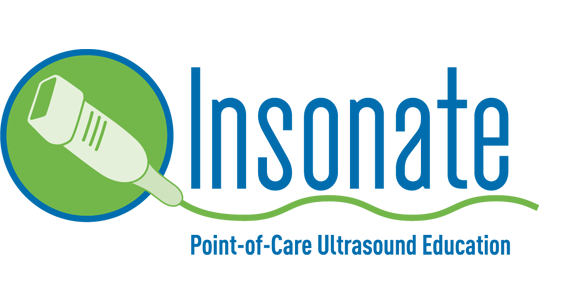Course List
-
Informational Presentation
Learn why this technology is needed and why you should be using it. Often this presentation is provided at no cost. (1 hour)
-
Foundations of Ultrasound
Perhaps the most important part of your training is the “Foundations Course”. Learn how ultrasound works and how you can take advantage of this science. Physics, Modes, knobology and safety issues are covered. This course is required as a prerequisite course to all the
-
Lung
Shallow or superficial exams of the lung surface can help identify pneumothorax and conditions that affect the visceral pleura like ARDS. Deeper exams of the lung can help you identify the nature of the lung tissue whether it is air-filled and normal or has interstitial edema. Additionally, pneumonias are more easily detected on point of care ultrasound than on chest x-ray. Perhaps the most valuable use is differentiating COPD exacerbations from congestive heart failure (3 hours each).
-
IV Access Using Ultrasound
For every vein you can see or feel, often there are 2 or 3 additional (larger) veins that you cannot. Ultrasound quickly and easily identifies these veins, determines that there is no obstruction to them such as thrombus and allows you to quickly cannulate the vessel under direct visualization. (4 hours)
-
E-FAST
In trauma cases many patients have ongoing internal bleeding or a collapsed lung, that is not readily identified by standard physical exam and vital signs assessment. The Enhanced Focused Assessment with Sonography in Trauma allows providers to peer inside to see pathology that might otherwise be missed. This exam is an extremely valuable skill and is essential for emergency room physicians, trauma surgeons and paramedics. (8 hours)
-
Gallbladder
Gall stones are common. In the context of usual symptoms and a stone seen wedged in the gall bladder neck delivers high accuracy in the diagnosis of Cholelithiasis. A “Sonographic Murphy’s Sign” has much higher sensitivity and specificity than the standard Murphy’s Sign. (4 hours)
-
LVH Measurements
12 Lead ECGs have low sensitivity and specificity for LVH. Here is a tool that allows you to quickly measure the walls to a millimeter accuracy. Track subtle changes from year to year. (4 hours)
-
Cellulitis, Abscess & Gas Gangrene
Cellulitis, abscess and gas producing infections, often have unique or “classic” signs on the ultrasound image. Be confident that you are about to drain an abscess rather than an a vascular malformation. (3 hours)
-
DVT
Safely rule out the presence of a DVT using a quick and validated method. (4 hours)
-
Aorta Assessment for AAA
Undiagnosed aortic aneurysm is common, occurring in 1 in 20 patients over 50 years of age. In patients over 65 with one risk factor, the odds are as high as 1 in 10. About 20% of all AAAs go on to rupture with dismal outcomes. Identifying them early remains the most effective way to protect these patients. History and physical exam alone will miss more than 50% of these time bombs. (4 hours)
-
IVC for volume assessment
You can look directly at the reservoir for blood returning to the heart. You can make powerful assessments about circulating volume and CVP pressure estimates. (2 hours)
-
Cardiac (Basic)
Assess for chamber size, wall thickness, pericardial effusion and estimate Ejection Fraction visually. (4 hours) For more advanced cardiac assessments see the PDF under the physician’s tab.
-
Renal and Urinary Bladder
Basic Renal is included in the EFAST exam but can be a stand-alone course with increased content. Renal size, cysts, hydronephrosis, stones and pyelonephritis (4 hours)
-
Additional Practice Time
If after the original training you wish to have more scanning time, we can provide additional scan models in 4 hour blocks until you feel comfortable with your new skills.

